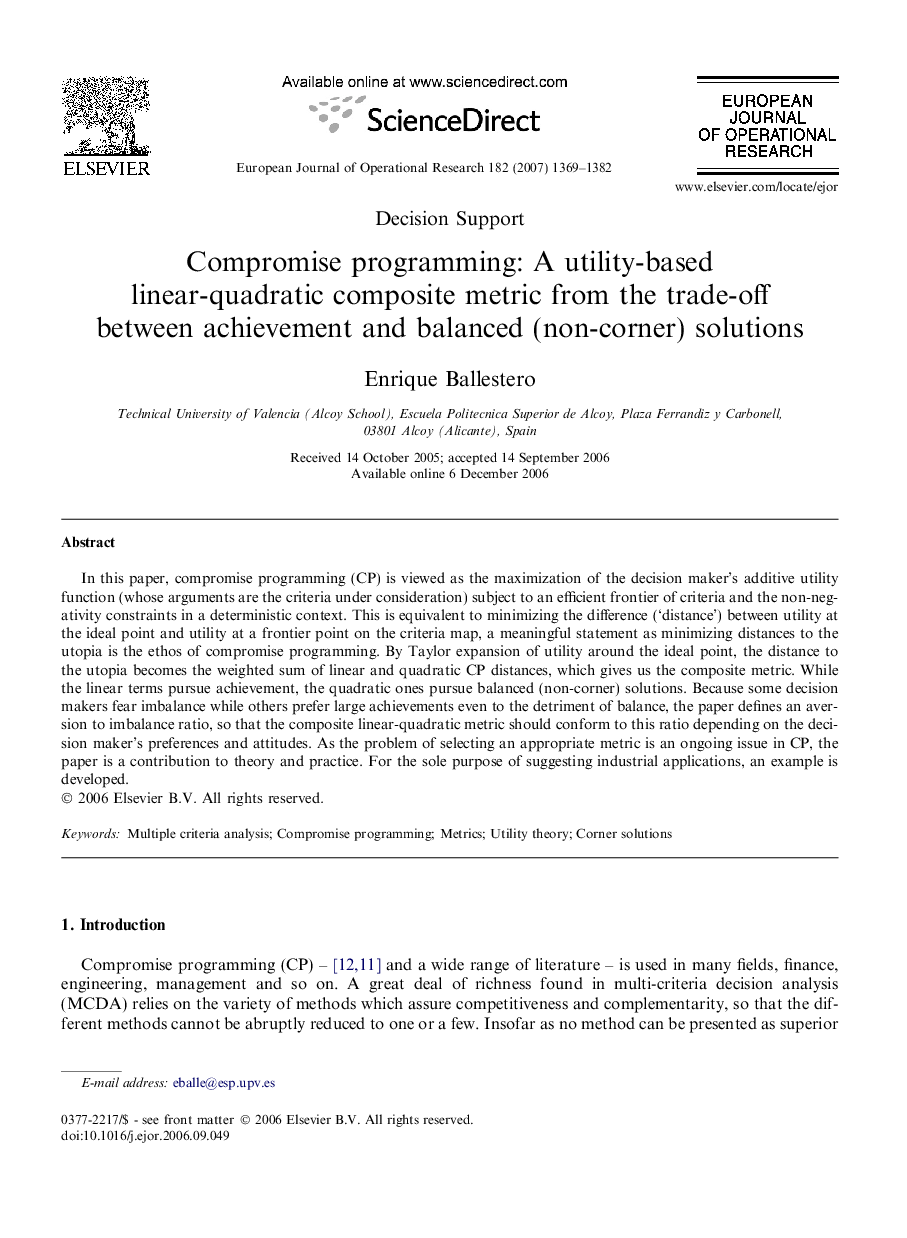| Article ID | Journal | Published Year | Pages | File Type |
|---|---|---|---|---|
| 482999 | European Journal of Operational Research | 2007 | 14 Pages |
In this paper, compromise programming (CP) is viewed as the maximization of the decision maker’s additive utility function (whose arguments are the criteria under consideration) subject to an efficient frontier of criteria and the non-negativity constraints in a deterministic context. This is equivalent to minimizing the difference (‘distance’) between utility at the ideal point and utility at a frontier point on the criteria map, a meaningful statement as minimizing distances to the utopia is the ethos of compromise programming. By Taylor expansion of utility around the ideal point, the distance to the utopia becomes the weighted sum of linear and quadratic CP distances, which gives us the composite metric. While the linear terms pursue achievement, the quadratic ones pursue balanced (non-corner) solutions. Because some decision makers fear imbalance while others prefer large achievements even to the detriment of balance, the paper defines an aversion to imbalance ratio, so that the composite linear-quadratic metric should conform to this ratio depending on the decision maker’s preferences and attitudes. As the problem of selecting an appropriate metric is an ongoing issue in CP, the paper is a contribution to theory and practice. For the sole purpose of suggesting industrial applications, an example is developed.
